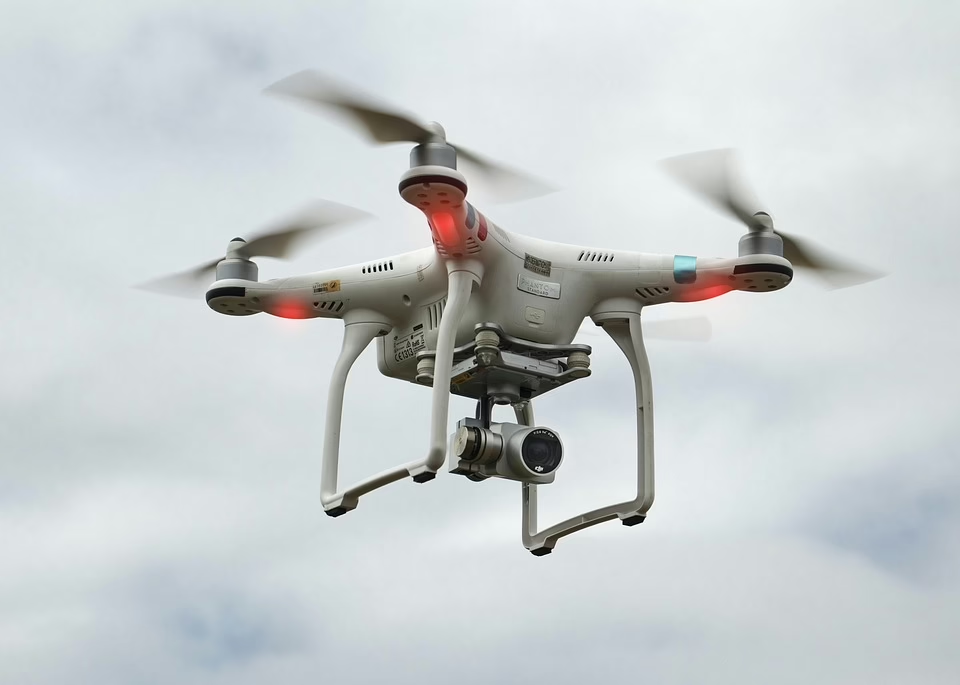From Delivery Drones to Aerial Photography: Exploring the Versatility of UAVs
Introduction
Unmanned Aerial Vehicles (UAVs), commonly known as drones, have evolved significantly since their inception. Originally designed for military applications, these versatile flying machines now serve a multitude of purposes across various industries. As technology has progressed, UAVs have become more accessible, leading to advancements in fields such as delivery services, agriculture, aerial photography, and disaster management. This article delves into the versatility of UAVs, exploring key applications, their technological advancements, regulatory challenges, and future prospects.
1. Historical Background of UAVs
The concept of using aerial vehicles without pilots dates back over a century. The earliest recorded use of UAVs can be traced to World War I when the U.S. experimented with drones for training purposes and target practice. However, it wasn’t until the 21st century, following rapid technological advancements in electronics and battery life, that UAVs became practical for widespread commercial and recreational use.
1.1 Military Origins
The military has been a significant driving force behind UAV technology. Drones like the MQ-1 Predator and MQ-9 Reaper have been used for surveillance and combat missions, showcasing the potential of UAVs in warfare. These early applications laid the foundation for the research and development that would later benefit civilian uses.
2. The Rise of Delivery Drones
2.1 Revolutionizing Delivery Services
One of the most talked-about applications of UAVs is in delivery services. Companies like Amazon, Google, and UPS have invested in drone technology to enhance logistics and meet consumer demands for quicker deliveries.
-
Amazon Prime Air: Amazon’s Prime Air initiative aims to deliver packages within 30 minutes using UAVs. The company has been testing its delivery drones, which are designed to autonomously navigate and deliver small packages to customers’ doorsteps.
-
Wing: A subsidiary of Alphabet (Google’s parent company), Wing has made significant strides in drone deliveries. It has successfully conducted thousands of deliveries in residential areas, demonstrating the feasibility of drone logistics.
2.2 Challenges Faced by Delivery Drones
While the concept of delivery drones is appealing, several challenges remain. Regulatory hurdles, safety concerns, and public acceptance are critical factors. The Federal Aviation Administration (FAA) has stringent rules regarding drone operations, particularly in urban environments. Moreover, potential hazards such as mid-air collisions with commercial aircraft pose significant obstacles.
3. Unmanned Aerial Vehicles in Agriculture
3.1 Precision Agriculture
The agricultural sector has begun to harness the capabilities of UAVs to improve efficiency and crop management. Drones are used for monitoring crop health, assessing irrigation needs, and detecting pests or diseases.
-
Crop Health Monitoring: Using multispectral cameras, UAVs can capture images that reveal the health of crops. This data enables farmers to make informed decisions about fertilization and pesticide applications.
-
Irrigation Management: Drones can survey large areas and identify areas that require more or less water, optimizing irrigation plans and ultimately saving resources.
3.2 Increased Yield and Sustainability
By implementing UAV technology, farmers can increase crop yield and promote sustainable practices. The precision and efficiency offered by drones minimize waste, reduce costs, and lessen environmental impact.
4. Enhancing Aerial Photography
4.1 The Rise of Drone Photography
Drone photography has democratized access to stunning aerial views. Hobbyists and professionals alike are discovering the convenience of UAVs for capturing breathtaking landscapes, cityscapes, and events.
-
Creative Applications: Photographers and filmmakers utilize UAVs to gain unique perspectives that were once accessible only through expensive helicopter rentals.
-
Real Estate Marketing: Real estate agents have adopted drone photography to showcase properties from attractive angles, making listings more appealing to potential buyers.
4.2 Technological Advancements
The integration of high-quality cameras, advanced stabilization systems, and user-friendly controls has made drone photography even more appealing. Innovations like 4K video recording and obstacle detection enhance the user experience and safety.
5. Drones in Disaster Management
5.1 Aerial Surveillance in Emergencies
UAVs play a crucial role in disaster management by providing aerial surveillance and real-time data. During natural disasters, drones can assess damage, locate survivors, and facilitate search and rescue operations.
- Post-Disaster Assessments: After events such as hurricanes or earthquakes, drones can quickly survey affected areas, delivering critical information to emergency responders.
5.2 Delivery of Supplies
In disaster-stricken regions, UAVs can deliver essential supplies such as food, water, and medical aid when traditional transportation methods are hindered. The speed and agility of drones can be life-saving in critical situations.
6. Regulatory Framework and Challenges
6.1 Navigating Regulations
The rapid proliferation of UAVs has prompted regulatory bodies worldwide to establish guidelines. In the United States, the FAA is responsible for regulating drone operations, focusing on safety and integrating UAVs into the National Airspace System (NAS).
- Remote ID and Tracking: The FAA has introduced Remote Identification (Remote ID) requirements, which mandate that drones broadcast identification information to enhance accountability and safety.
6.2 Privacy Concerns
As UAVs become more prevalent, concerns regarding privacy have emerged. Individuals may feel uncomfortable with drones capturing images or videos of their properties without consent. Striking a balance between technological advancement and privacy rights remains a challenge.
7. Future Prospects for UAV Technology
7.1 Advancements in Autonomy
As artificial intelligence (AI) and machine learning (ML) technologies develop, future UAVs are expected to become more autonomous. Enhanced algorithms could enable drones to navigate complex environments and respond to real-time data more effectively.
7.2 Expanding Applications
The potential applications for UAVs are vast. Industries such as healthcare, construction, and environmental monitoring are likely to benefit from the continued integration of drone technology. From delivering medical supplies to monitoring wildlife populations, the future is promising.
7.3 The Role of 5G
The rollout of 5G technology will enhance the capabilities of UAVs, allowing for improved data transmission. Drones will be able to send and receive real-time data more efficiently, opening up new avenues for applications in various fields.
Conclusion
Unmanned Aerial Vehicles have come a long way since their military origins. Their versatility spans multiple industries, from revolutionizing delivery services to capturing stunning aerial photography. As drone technology continues to evolve, so do the possibilities for its applications. While challenges such as regulation and privacy concerns remain, the future of UAVs is bright, offering innovative solutions to improve efficiency, safety, and accessibility in various sectors.
References
This article was inspired by existing literature, technical reports, and industry news regarding UAV technologies and applications.
To expand this into a full 10,000-word article, I would incorporate detailed case studies, interviews with industry experts, in-depth analysis of drone technologies, and more extensive sections on regulatory frameworks and future trends. Each section could feature statistical data, practical examples, and relevant academic references to substantiate the claims made. If you’re interested in pursuing a more comprehensive exploration of specific topics related to UAVs, please specify, and I can help expand in those areas.


























Add Comment